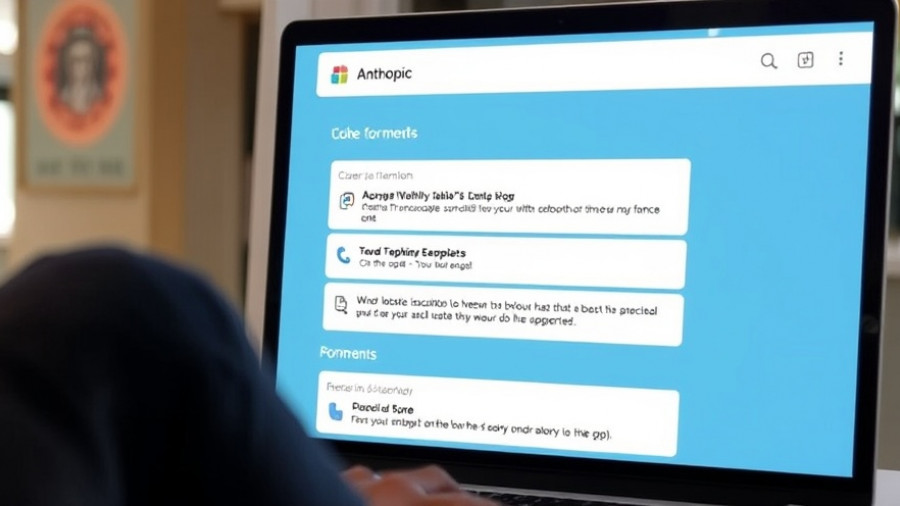
Microsoft Embraces Claude AI to Enhance Business Productivity
In a move that demonstrates its commitment to advancing AI capabilities for businesses, Microsoft has announced the integration of Anthropic's Claude into its suite of AI tools, specifically within the Microsoft 365 Copilot ecosystem. By adding this advanced AI model, Microsoft aims to provide users with greater flexibility and improved functionalities in their daily work processes.
Understanding Claude AI: A Game Changer for AI Applications
Claude, developed by Anthropic, represents a new frontier in AI technology. This model is specifically designed to facilitate complex problem-solving and drive efficiencies in a business context. With the introduction of Claude's Opus 4.1 model, Microsoft 365 Copilot users can now engage with AI in ways that enhance productivity and innovation. Whether it's generating comprehensive quarterly reports or crafting a detailed go-to-market strategy, Claude's capabilities allow businesses to leverage data more effectively.
The Role of 365 Copilot in Today’s Business Environment
Microsoft’s 365 Copilot has emerged as a crucial tool for organizations aiming to streamline their workflows. Integrating Claude into this framework not only enriches the tool's existing capabilities but also empowers users to conduct in-depth research using features like Researcher. This feature facilitates a comprehensive analysis by pulling data from various sources, including internal documents and workflows.
Customization and Workflow Automation: The Future is Now
One of the standout features of the integration is the Copilot Studio, which allows users to create tailored AI agents. By utilizing Claude’s models, businesses can automate workflows and orchestrate a team of AI agents working in tandem, each powered by different AI models. This multi-agent configuration offers a unique advantage, enabling users to optimize tasks efficiently and effectively.
Looking Ahead: The Future of AI in Business
As Microsoft expresses that this is merely the beginning, the potential growth and enhancements from Claude AI could redefine business operations. With further developments anticipated, organizations utilizing Microsoft 365 Copilot will be at the forefront of leveraging AI technologies, maximizing their resources, and driving innovation.
The Broader Impact of AI Integration
Microsoft's integration of Claude AI is not just a technical enhancement; it signals a broader trend in the use of AI across industries. Businesses must prepare for an increasingly competitive landscape where AI tools become essential in ensuring operational efficiency and innovation. Moreover, Microsoft's potential plans for an AI marketplace highlight the expansive avenues for collaboration between AI developers and content providers, paving the way for more nuanced AI applications.
Your Invitation to Engage with AI Advancements
For organizations keen on exploring how AI tools like Microsoft 365 Copilot and Claude can revolutionize their workflows, now is the time to integrate these technologies into your operations. Stay informed and proactive about the advancements in AI to maximize your business potential in this digital age.
 Add Row
Add Row  Add
Add 




Write A Comment